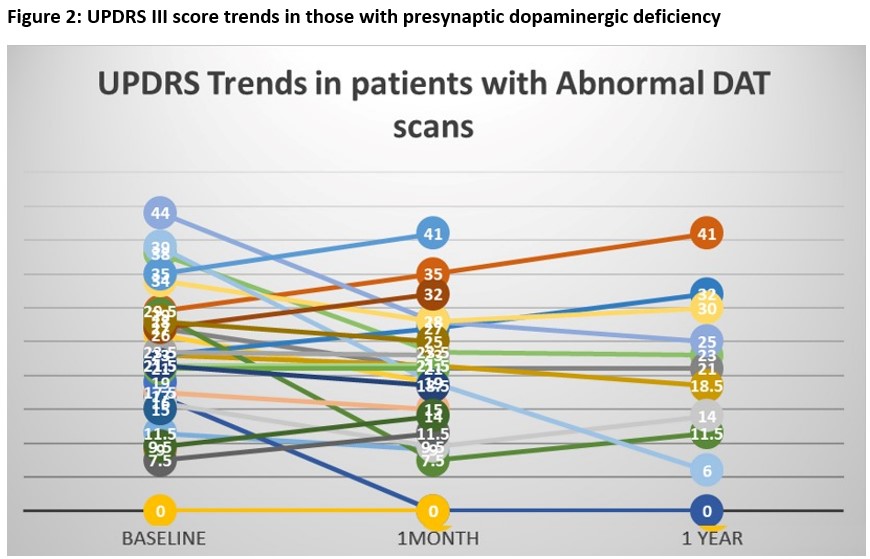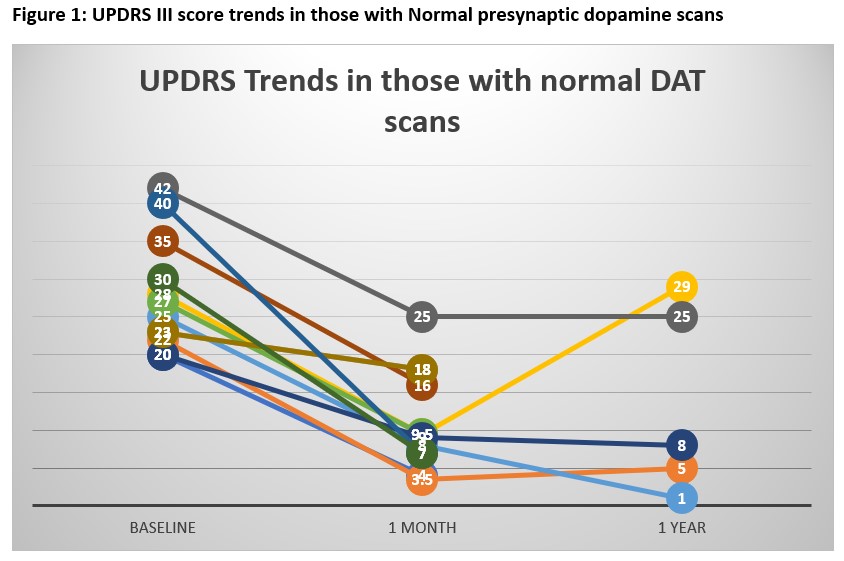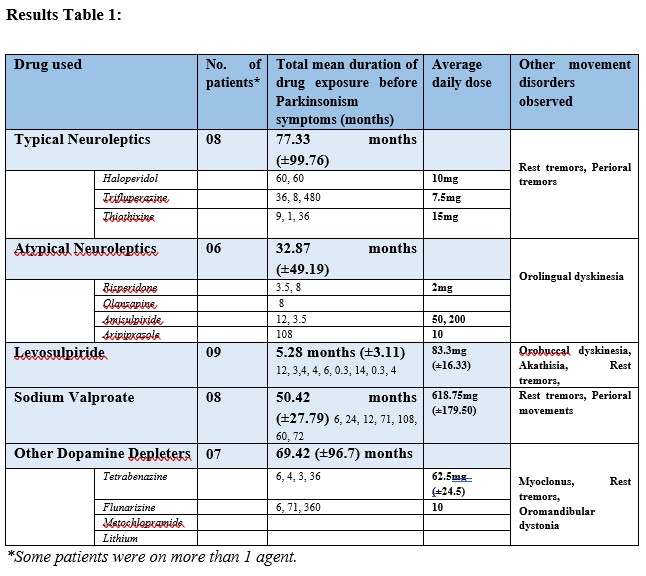Category: Drug-Induced Movement Disorders
Objective: To analyse the role of presynaptic dopaminergic imaging (TRODAT/ F Dopa PET) scans to predict long-term outcomes in patients of new onset parkinsonian symptoms after exposure to drugs known to cause parkinsonism.
Background: Drug-induced parkinsonism (DIP) is the second common cause of parkinsonism after idiopathic Parkinson’s disease (PD) and is prevalent in the elderly. It is difficult to distinguish drug-induced parkinsonism from degenerative parkinsonism on a clinical basis, resulting in prognostic and therapeutic dilemmas, wherein presynaptic dopaminergic imaging can be a helpful aid in making the differentiation.
Method: A retrospective study of 31 patients with new onset parkinsonism after exposure to offending drugs and had undergone a presynaptic imaging was undertaken. All patients were evaluated with UPDRS part III at baseline, subsequently at one month and then long term (>1 year) when feasible.
Results: Out of 31 patients (12 female, 19 male) with an average age 64.9 (±4.69) yrs, 19 had reduced dopaminergic uptake while 12 had normal presynaptic dopaminergic imaging. In the latter, average baseline UPDRS III score on first visit was 27.9 (±4.23) which improved by 59.6% (±12.36) within 3 months of stopping the offending agent (Figure 1). In those with abnormal presynaptic DAT imaging, the mean baseline UPDRS III motor scores of 29.3 (±5.92) only reduced by 25.4% (±10.66) within 3 months of offending drug withdrawal (Figure 2).
Long term follow-up was available in 5 patients with normal presynaptic DAT scans, of which 03 recovered, while 01 worsened subsequently with features of PSP. Conversely, on follow up of 14/19 patients with reduced uptake, 9 required subsequent dopa medication, and 4 improved without additional medication compared to baseline. One patient from each group died of unrelated causes.
Levosulpiride was the commonest culprit drug (9/31 patients), where parkinsonism appeared even with shorter (mean 5.28 months) duration of usage (Table 1). Also, orobuccolingual dyskinesias (9 patients) and akathisia (3 patients) were seen in our patients.
Conclusion: Among patients developing parkinsonism after exposure to anti-dopaminergic drugs, 61.2% had abnormal presynaptic dopaminergic scans. Only 28.5% of this cohort had long term improvement, while remainder required symptomatic treatment after offending drug withdrawal, possibly due to underlying subclinical parkinsonism or a genetic predisposition.
To cite this abstract in AMA style:
V. Mathur, A. Shetty, H. Shah, V. Lele, P. Wadia. Functional Neuroimaging and Follow up trends in Drug induced movement disorders. [abstract]. Mov Disord. 2023; 38 (suppl 1). https://www.mdsabstracts.org/abstract/functional-neuroimaging-and-follow-up-trends-in-drug-induced-movement-disorders/. Accessed December 18, 2025.« Back to 2023 International Congress
MDS Abstracts - https://www.mdsabstracts.org/abstract/functional-neuroimaging-and-follow-up-trends-in-drug-induced-movement-disorders/



